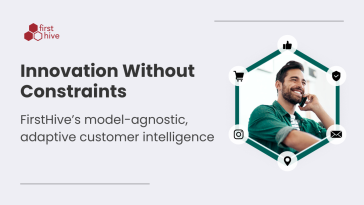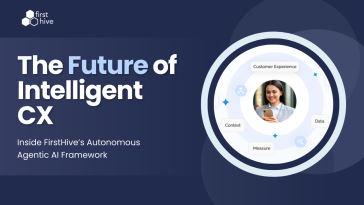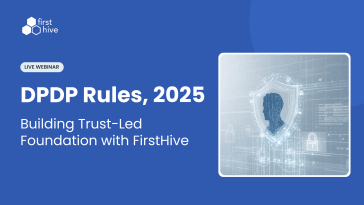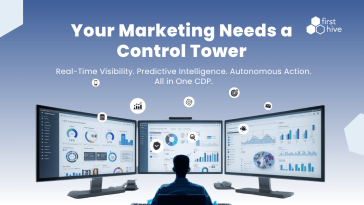Customer Data Platforms (CDPs) and Customer Relationship Management (CRM) tools are often confused, as both store customer records that the business can use for insight. However, below the surface, they’re very different solutions. In this article, we will break down the distinction between CDPs and CRMs and explore whether or not they can fruitfully coexist in the same technology stack.
What is a CRM and what can it do?
A CRM is a software platform that helps businesses manage their interactions and relationships with customers. It allows companies to store and organize customer data, track customer interactions, and manage sales and marketing activities. The main goal of a CRM is to improve customer relationships, increase customer satisfaction, and drive sales growth.
What is a CDP and how is it different from a CRM?
A CDP, on the other hand, is a unified data platform that collects and organizes customer data from various sources, both online and offline. It creates a comprehensive and unified customer profile that includes demographic information, purchase history, browsing behavior, and more. Unlike a CRM, a CDP is not focused on managing customer interactions but rather on providing a holistic view of each customer across multiple touchpoints.
The Seven Key Differences Between CDPs and CRMs
- Data Gathering: CRMs primarily gather customer data through direct interactions, such as sales calls or support tickets, while CDPs collect data from multiple sources, including websites, mobile apps, social media, and offline channels.
- Data Types: CRMs typically focus on capturing structured data, such as contact information and sales transactions, while CDPs can handle both structured and unstructured data, including behavioral data, sentiment analysis, and customer feedback.
- Target Audience: CRMs are mainly used by sales and marketing teams to manage customer relationships and drive sales, while CDPs are more suitable for organizations that need a unified view of their customers across various departments and touchpoints.
- Scope and Purpose: CRMs are primarily focused on managing customer interactions and improving sales and marketing efforts, while CDPs are designed to provide a comprehensive understanding of customers and enable personalized experiences and targeted marketing campaigns.
- Reach and Overview: CRMs provide a limited view of customer interactions and data within the organization, while CDPs offer a broader and more detailed view that includes data from multiple channels and sources.
- Integration: CRMs are often integrated with other sales and marketing tools, such as email marketing platforms or lead generation tools, while CDPs are designed to integrate with a wide range of marketing technologies, including data analytics platforms, content management systems, and advertising platforms.
- Advantages and Disadvantages: CRMs offer benefits such as improved sales productivity and better customer service but may lack the ability to handle large amounts of data or provide a comprehensive customer view. CDPs, on the other hand, excel at data management and personalization but may require more resources and expertise to implement and maintain.
Can CDPs and CRMs Coexist?
The question of whether CDPs and CRMs can coexist in the same technology stack depends on the specific needs and goals of the organization. While there is some overlap in functionality, CDPs and CRMs serve different purposes and cater to different use cases. In some cases, organizations may choose to use both solutions, with the CRM focused on managing customer interactions and the CDP providing a unified view of the customer across various touchpoints.
However, it’s important to note that integrating and managing multiple systems can be complex and require careful planning and implementation. Organizations should assess their data management needs, resource capabilities, and long-term goals before deciding to adopt both CDPs and CRMs.
Conclusion
CDPs and CRMs are valuable tools for businesses looking to leverage customer data for insights and personalized experiences. While they share similarities in terms of storing customer records, their underlying capabilities and purposes are distinct. Understanding the key differences between CDPs and CRMs is crucial for organizations to make informed decisions about their data management strategies and choose the right solution for their specific needs.
Let’s delve into some frequently asked questions to shed light on this topic:
1. What is a CDP?
A Customer Data Platform (CDP) is a software solution that collects, integrates, and manages customer data from various sources, such as websites, mobile apps, and offline interactions. It creates a unified customer profile by combining data from different touchpoints, allowing businesses to gain a holistic view of their customers. CDPs focus on collecting and organizing first-party data, which is data directly obtained from customers or their interactions with the business.
2. What is a CRM?
A Customer Relationship Management (CRM) system is also a software tool that stores customer data, but its primary focus is on managing customer interactions and relationships. CRMs are often used by sales, marketing, and customer service teams to track customer interactions, manage leads, and facilitate communication. They provide a centralized platform for teams to access and update customer information, enabling them to streamline processes and improve customer engagement.
3. How do CDPs and CRMs differ in terms of capabilities?
While both CDPs and CRMs store customer data, their capabilities differ significantly. CDPs excel in data integration and unification, allowing businesses to bring together data from multiple sources and create a comprehensive customer profile. They enable advanced segmentation and personalization by leveraging this unified data, empowering businesses to deliver targeted marketing campaigns and personalized experiences.
On the other hand, CRMs focus more on managing customer relationships and facilitating team collaboration. They provide features like lead management, sales pipeline tracking, and customer communication tools. CRMs are designed to enhance customer interactions and improve sales and customer service processes.
4. Which tool should businesses choose?
The choice between a CDP and a CRM depends on the specific needs and goals of the business. If the primary objective is to gain a comprehensive understanding of customers and deliver personalized experiences, a CDP would be the ideal choice. However, if the focus is on managing customer relationships, improving sales processes, and enhancing team collaboration, a CRM would be more suitable.
In conclusion, while CDPs and CRMs both play crucial roles in leveraging customer data, they have distinct purposes and capabilities. Understanding these differences is essential for businesses to make informed decisions and select the right tool for their data management strategies. Whether it’s harnessing the power of unified customer profiles or streamlining sales processes, choosing the right solution can significantly impact a business’s ability to drive growth and deliver exceptional customer experiences.








